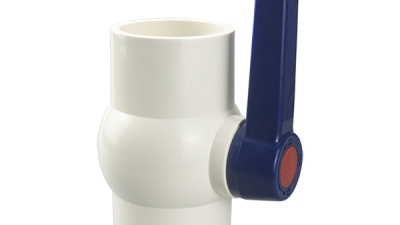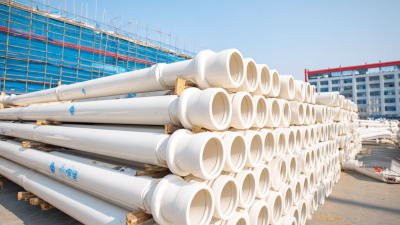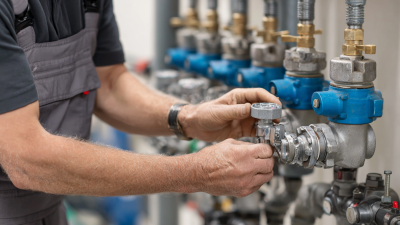How to Evaluate the Cost Effectiveness of PVC Gate Valves for Your Procurement Needs
Table of Contents
- Understanding the Basics of PVC Gate Valves and Their Applications
- Identifying Key Factors in the Cost Analysis of PVC Gate Valves
- Comparing Long-Term Savings: PVC Gate Valves vs. Alternatives
- Evaluating Performance Metrics: Reliability and Maintenance Costs
- Calculating Total Cost of Ownership for PVC Gate Valves
- Tips for Making Informed Procurement Decisions on PVC Gate Valves
- Exploring the Benefits and Cost-Effectiveness of 6-Inch PVC Ball Valves: A Comprehensive Price Guide
- FAQS
- Conclusion
- Related Posts
In today’s really competitive world of industrial buying, it’s super important to get a good grasp on how cost-effective components like PVC gate valves actually are before making a purchase. I came across this recent industry report that’s pretty eye-opening — it says that worldwide demand for PVC gate valves is expected to grow by about 5.4% each year over the next five years. That’s largely thanks to new manufacturing tech and bigger demand from sectors like water treatment and construction. As someone who’s been in the game for over a decade, supplying plastic pipes, fittings, and valves through Ningbo Pntek, I totally get that figuring out the right price isn’t just about the initial cost. It’s also about the long-term value, durability, and how well these products perform.
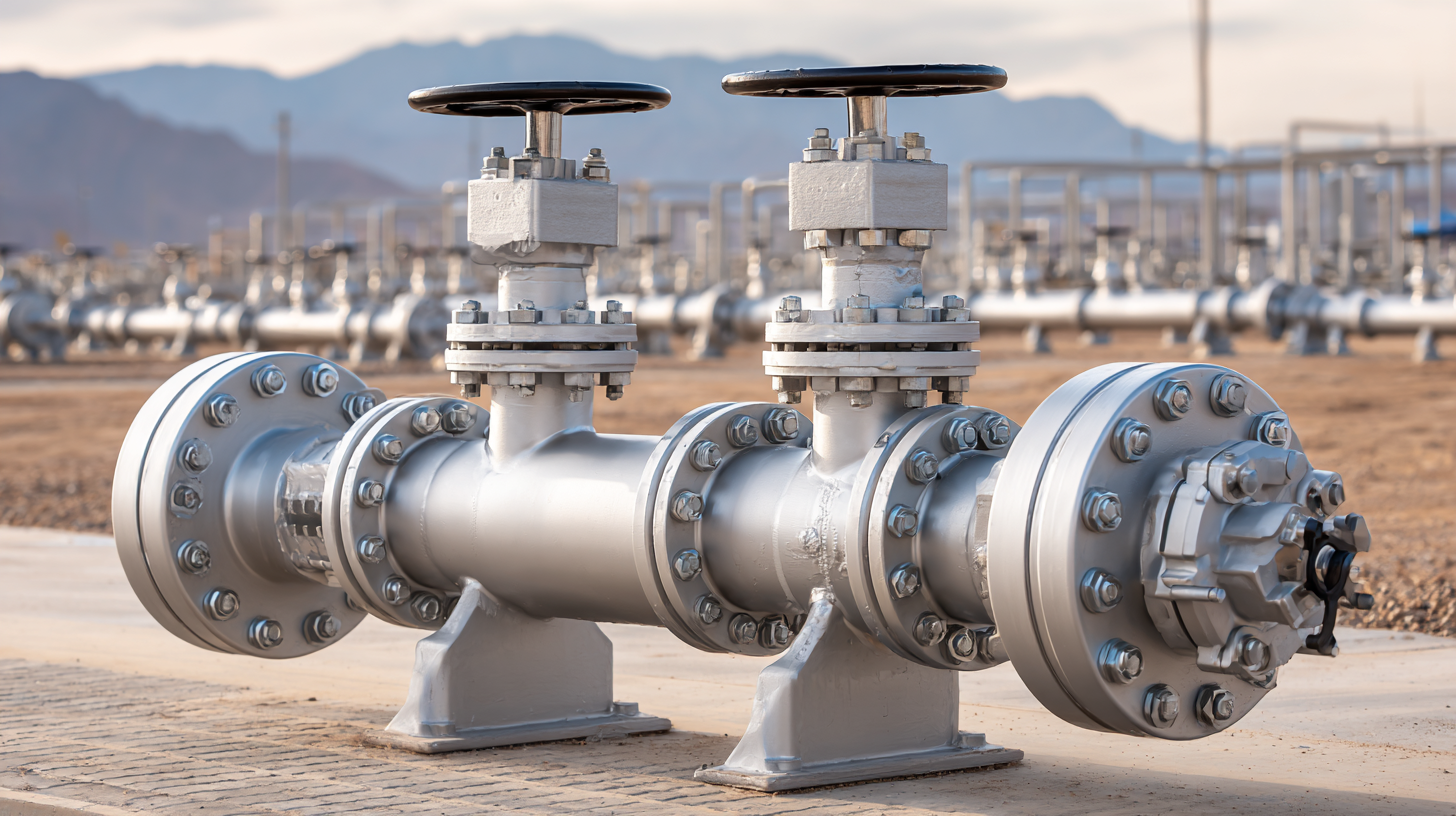
So, this guide is here to help procurement folks and engineers like you understand what really influences cost-effectiveness — so you can make smarter choices in a market that keeps changing all the time.
Understanding the Basics of PVC Gate Valves and Their Applications
PVC gate valves are pretty much essential parts in a bunch of different systems, especially when it comes to water distribution and wastewater management. If you’re looking into procurement or just trying to get a handle on what they are, it’s good to understand how they’re built and how they work. Unlike their metal counterparts, PVC gate valves are lightweight, resist corrosion well, and they usually flow the water more smoothly. In fact, a report from Research and Markets mentioned that the global PVC valve market is expected to grow at about 5.6% CAGR from 2020 to 2025 — showing that more folks are really leaning toward this durable, budget-friendly material for controlling fluids.
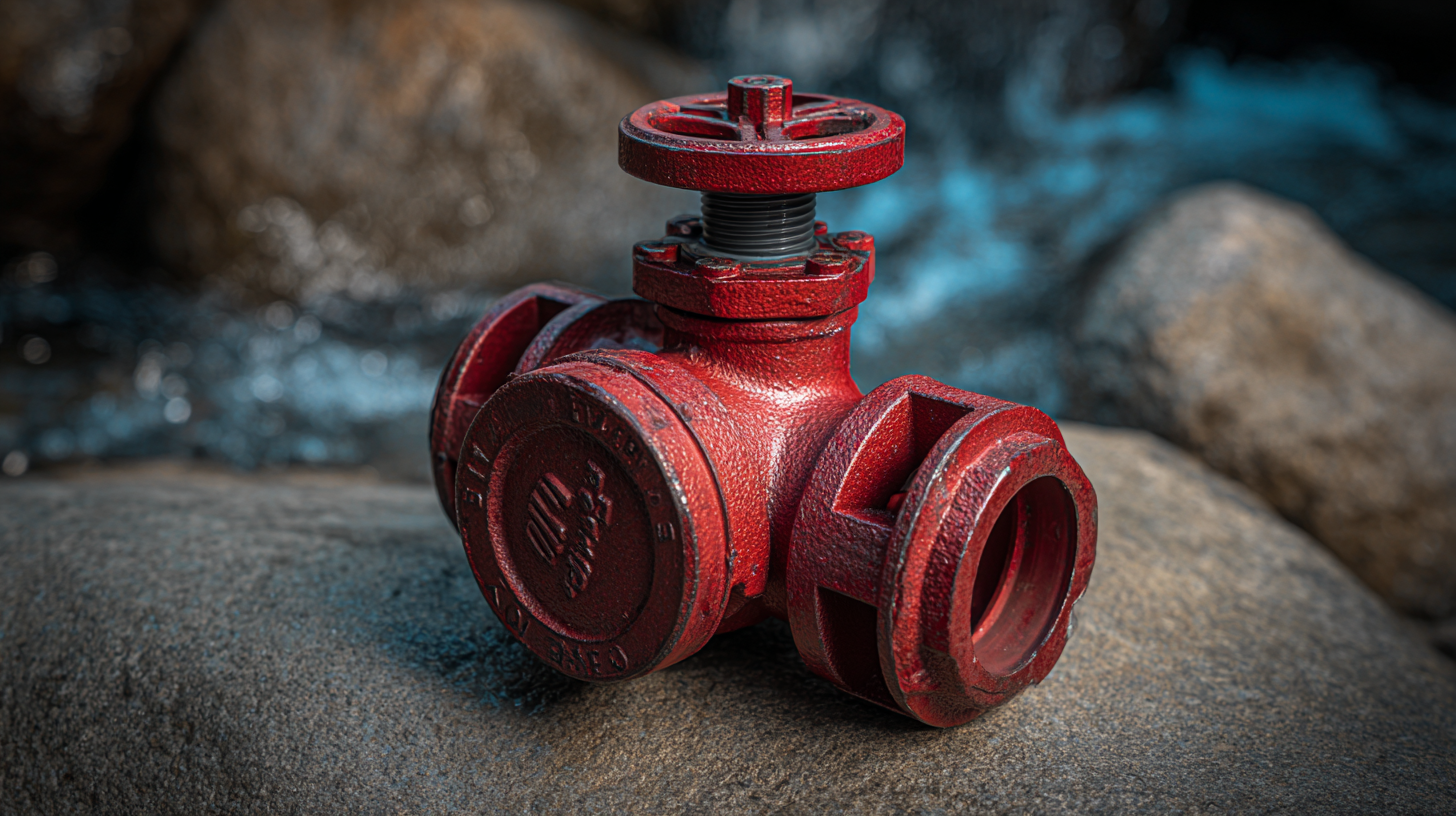
These valves are perfect for non-potable water setups, handling pressures up to 150 PSI without breaking a sweat. For farmers and irrigation systems, PVC gate valves come in handy—they make controlling water flow easy and cost-effective. The American Water Works Association pointed out that using PVC can slash maintenance costs by up to 30% compared to traditional metal valves. So, not only are they cheaper upfront, but they also last longer and are super easy to install, making them a smart choice for freshwater projects and industrial uses.
Picking the right valve for your specific needs? Yeah, that’s pretty important, and PVC gate valves are definitely worth considering.
Identifying Key Factors in the Cost Analysis of PVC Gate Valves
When you're trying to figure out whether PVC gate valves are a good bang for your buck, it’s really important to look at a few key factors that play into the overall cost. One of them is the initial price — and that can vary quite a bit depending on the quality and who you buy from. For example, a report from the Plastic Pipe and Fittings Association (PPFA) shows that high-quality PVC valves might cost around 10-15% more upfront compared to cheaper options. But here’s the thing — those higher-quality valves tend to last way longer and need less maintenance, so in the long run, they can actually save you money overall.
Another thing to keep in mind is how easy they are to install and operate. From what industry data suggests, PVC valves are lighter and simpler to put in than metal ones, which means you could cut down on labor costs by up to 20%. Plus, PVC gate valves are pretty resistant to corrosion, so you’re not constantly repairing or replacing them. That kind of durability really helps with long-term savings. At Ningbo Pntek Technology Co., Ltd., we’ve got over ten years of experience exporting these valves, and we’re always dedicated to offering products that strike a good balance between performance and cost — making sure our clients get the best value out of their purchase.
How to Evaluate the Cost Effectiveness of PVC Gate Valves for Your Procurement Needs
| Feature | PVC Gate Valve Type | Unit Cost (USD) | Lifespan (Years) | Maintenance Cost (Annual USD) | Total Cost Over Lifespan (USD) |
|---|---|---|---|---|---|
| Standard PVC Gate Valve | 2” | 45 | 10 | 5 | 95 |
| Heavy Duty PVC Gate Valve | 3” | 75 | 15 | 8 | 195 |
| Lightweight PVC Gate Valve | 4” | 60 | 8 | 5 | 100 |
| Corrosion Resistant PVC Gate Valve | 6” | 90 | 12 | 10 | 210 |
Comparing Long-Term Savings: PVC Gate Valves vs. Alternatives
When you're trying to figure out whether PVC gate valves are a good deal, it's a good idea to compare them against other materials like metal, rubber, or ceramic. I came across a report from the Global Industrial Valves Market that says PVC gate valves can be as much as 30% cheaper upfront compared to metal ones. That kind of savings can really add up, especially if you're working on big projects — you could use that extra cash somewhere else that's just as important.
But it's not just about the initial cost, right? You’ve gotta think about the long run too. PVC valves tend to be pretty durable and resistant to rust and corrosion, which means less maintenance over time. There was a study from the American Society of Mechanical Engineers that pointed out the total lifecycle costs of PVC valves are roughly 25-40% lower than traditional metal ones. That’s a pretty solid reason to consider PVC if you’re trying to get the best bang for your buck down the line.
Cost Effectiveness Comparison of PVC Gate Valves vs. Alternatives
Evaluating Performance Metrics: Reliability and Maintenance Costs
When you're trying to figure out if PVC gate valves are a good deal for your needs, it's really important to look at how they perform, especially in terms of reliability and the costs you’ll face for maintenance. According to a report from the Plastics Industry Association, if you take good care of them, PVC gate valves can last up to 25 years—way longer than metal ones, which usually last around 15 years. That kinda makes a big difference, right? Fewer replacements mean saving money in the long run, so they often turn out to be a smart investment for the future.
Plus, maintenance costs shouldn’t be overlooked when weighing your options. The American Society of Mechanical Engineers (ASME) has found that maintenance for PVC gate valves can be about 30% cheaper than for traditional metal ones. One of the main reasons is that PVC doesn’t rust or corrode like metal does, which means less frequent inspections, repairs, or replacements. When you factor all this in, it really helps you get a clearer picture of the total cost of owning these valves, making sure you’re making a choice that’s financially smart in the long run.
Calculating Total Cost of Ownership for PVC Gate Valves
When you're looking into the cost-effectiveness of PVC gate valves for your purchase, it’s super important to get a good grasp of the Total Cost of Ownership, or TCO for short. Basically, TCO isn’t just about the price you pay upfront — it also covers things like maintenance, operational costs, and any replacements down the line. For example, even though PVC gate valves usually cost less initially than metal ones, their resistance to corrosion and the fact that they don’t need as much maintenance can really add up to big savings over time. This becomes especially relevant if your company cares about sustainability and wants to cut operational costs.
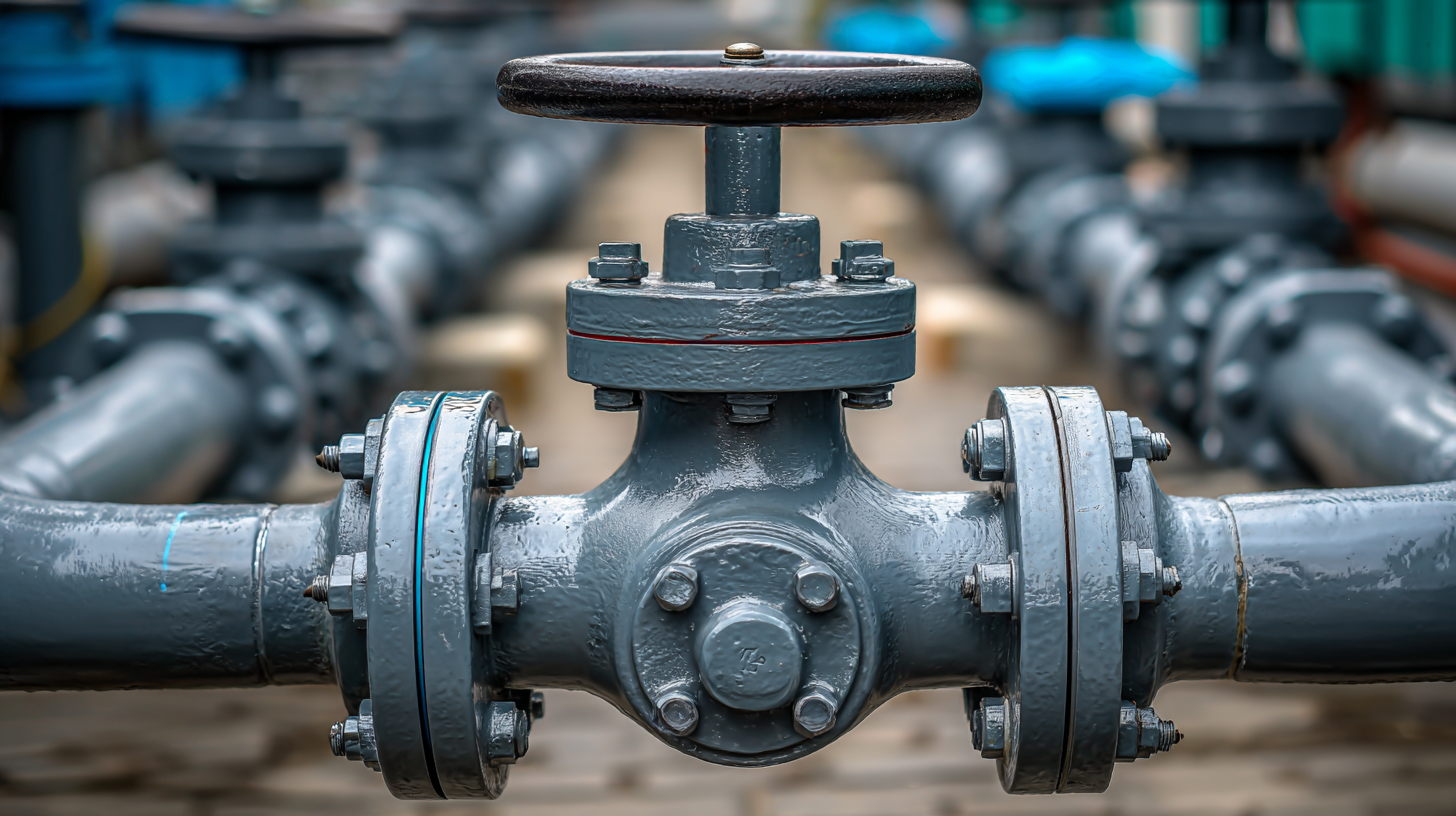
Ningbo Pntek Technology Co., Ltd., is a top player when it comes to plastic pipes, fittings, and valves, and they really know their stuff when it comes to the long-term benefits of using PVC materials. With over a decade of exporting experience, Pntek’s products are built for durability and efficiency. That means you’re not just saving money upfront, but also getting a product that lasts longer, making your investment go further. When you do a proper TCO calculation, it helps your business make smarter choices aligned with your procurement strategies and operational goals. In the end, it all adds up to better efficiency and productivity — it’s a win-win!
Tips for Making Informed Procurement Decisions on PVC Gate Valves
When you're looking into buying PVC gate valves, it’s pretty important to make choices that aren’t just about the price upfront but also about getting real value in the long run. Start by thinking about what you actually need — like, what pressure levels you're dealing with, how much flow is needed, and whether the valves are chemical-resistant enough for your situation. This will help you figure out which valves tick all the boxes for both industry standards and your specific needs. It’s also a good idea to shop around and compare different suppliers because, honestly, quality and prices can vary a lot.
Now, don’t forget to think beyond just the initial cost. You should also consider the entire lifecycle. Things like installation, maintenance, and potential replacements over time can really add up. Doing a quick cost analysis like this will give you a better idea of what the real investment looks like. And lastly, if you can, talk to other folks who’ve used similar valves or check in with industry pros — their feedback on how reliable and effective certain brands are can be super helpful. By putting all these pieces together, you’ll be in a much better spot to pick a valve that balances what you spend now with the benefits you’ll see down the line.
Exploring the Benefits and Cost-Effectiveness of 6-Inch PVC Ball Valves: A Comprehensive Price Guide
When considering industrial applications of ball valves, the 6-inch PVC ball valve stands out due to its remarkable balance of performance and cost-effectiveness. According to industry data, the medium pressure range of 8-16 kgs makes these valves suitable for a variety of general-purpose uses, including irrigation and water systems. At a price that can range from $0.10 to $8.00 per piece depending on order quantity, these valves offer a compelling return on investment for bulk buyers, particularly for projects requiring large-scale installations.
The versatility of 6-inch PVC ball valves is further enhanced by their availability in multiple sizes and materials, allowing them to meet specific application needs. Beyond their economic advantages, the flexibility in customization—such as logos and packaging for orders of 500 pieces or more—means businesses can maintain brand integrity while optimizing overall project costs. With the ability to quickly procure samples and a lead time of approximately 10 days for initial orders, decision-makers can rapidly assess the suitability of these valves for their unique applications.
Moreover, shipping options support sea freight logistics, making them an ideal choice for large orders. Industry forecasts suggest a growing demand for reliable and cost-efficient valve solutions, indicating that choosing the right PVC ball valve can lead to significant operational savings while ensuring product quality and performance standards are met.
FAQS
: PVC gate valves are essential components primarily used in water distribution and wastewater management systems.
PVC gate valves are lightweight, anticorrosive, and have excellent flow characteristics, making them a cost-effective and durable option.
PVC gate valves can handle pressures up to 150 PSI, making them suitable for non-potable water applications.
The global PVC valve market is projected to grow at a CAGR of 5.6% from 2020 to 2025.
Using PVC materials can reduce maintenance costs by up to 30% compared to traditional metal structures due to their corrosion resistance.
PVC gate valves can last up to 25 years when properly maintained, significantly longer than the typical 15 years lifespan of metal valves.
PVC gate valves are lighter and easier to install, potentially reducing labor costs by up to 20% compared to metal alternatives.
While high-quality PVC valves may have an upfront cost that is 10-15% higher, their longevity and lower maintenance needs typically lead to lower total lifecycle costs.
The corrosion resistance of PVC gate valves results in less frequent replacements and repairs, making them a more cost-effective option over time.
Evaluating performance metrics such as reliability and maintenance costs is crucial for accurately gauging the total cost of ownership and making financially sound procurement decisions.
Conclusion
When you're looking into the cost-effectiveness of PVC gate valves for your procurement needs, it’s really important to understand where and how these valves are used, along with the factors that affect their price. This article basically highlights why it's worth thinking long-term—like, how they compare to other valve types in terms of savings over time. Plus, it points out the importance of performance aspects such as reliability and maintenance costs. By taking into account the total cost of ownership, you can make smarter decisions that fit your budget while still ensuring your operations stay efficient and high-quality.
Ningbo Pntek Technology Co., Ltd. has over ten years of experience exporting these valves, and they really stress the need for careful cost analysis when choosing PVC gate valves. The tips and insights shared here are meant to help procurement folks like you evaluate your options better, so you end up with valves that not only meet your needs but are also competitively priced—without sacrificing dependability along the way.
Blog Tags:

Isabelle
Application

Underground pipeline
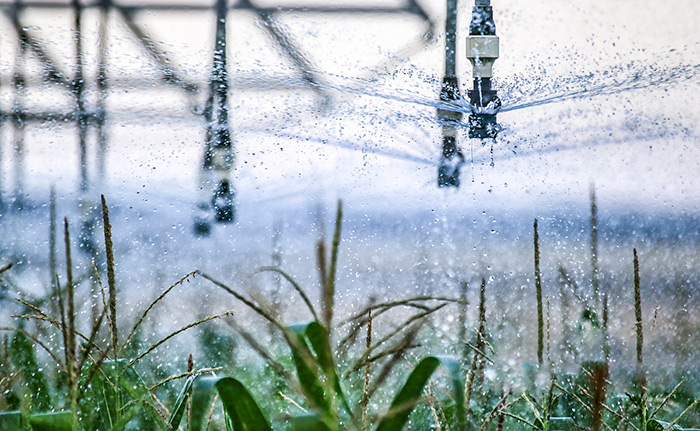
Irrigation System
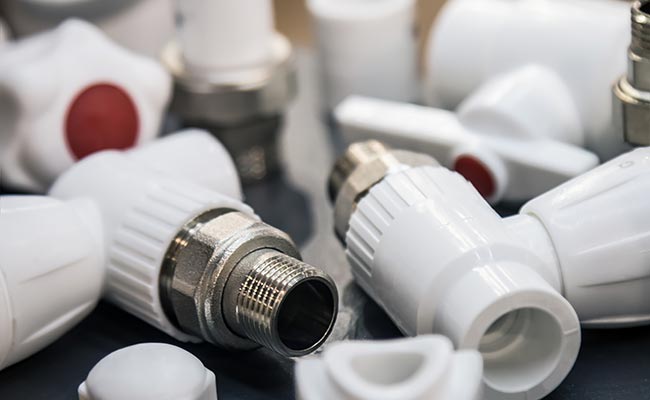
Water Supply System


